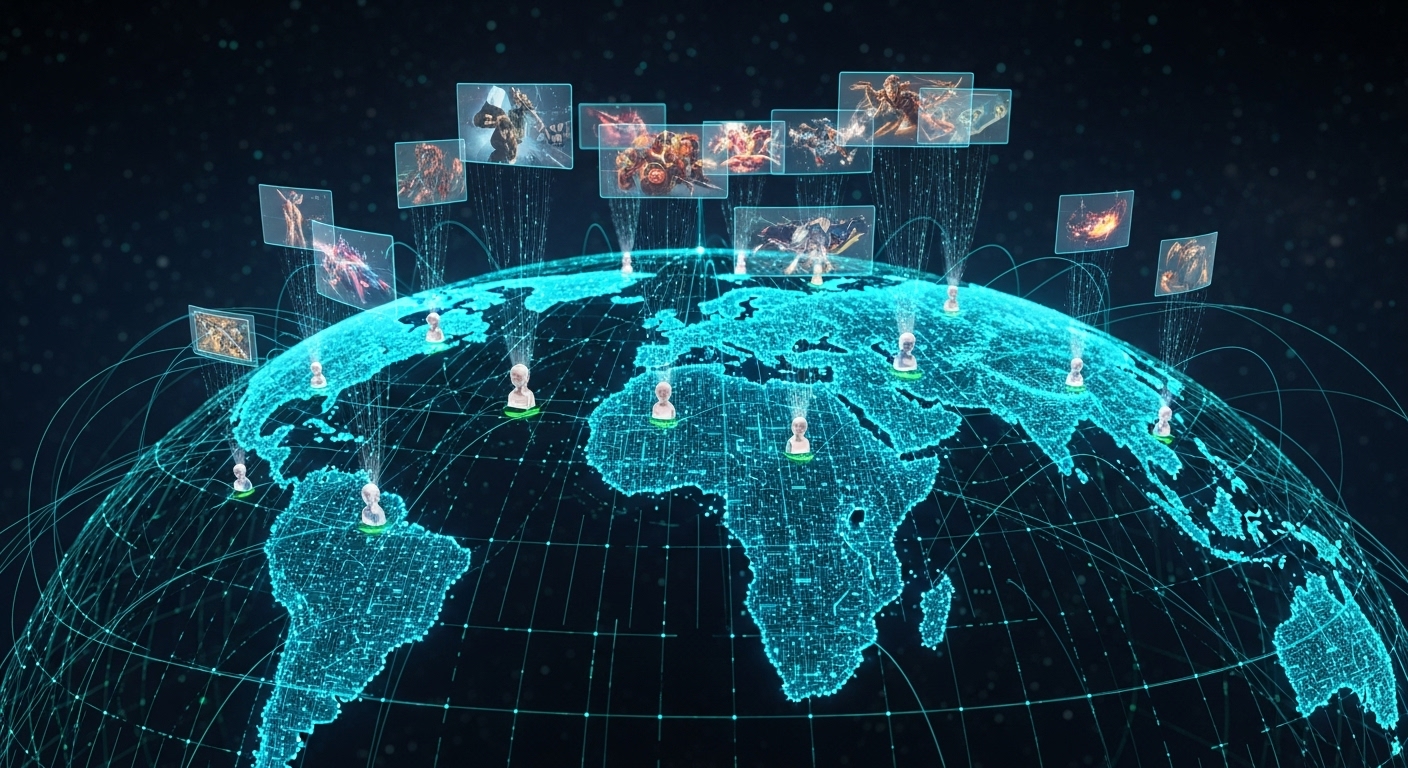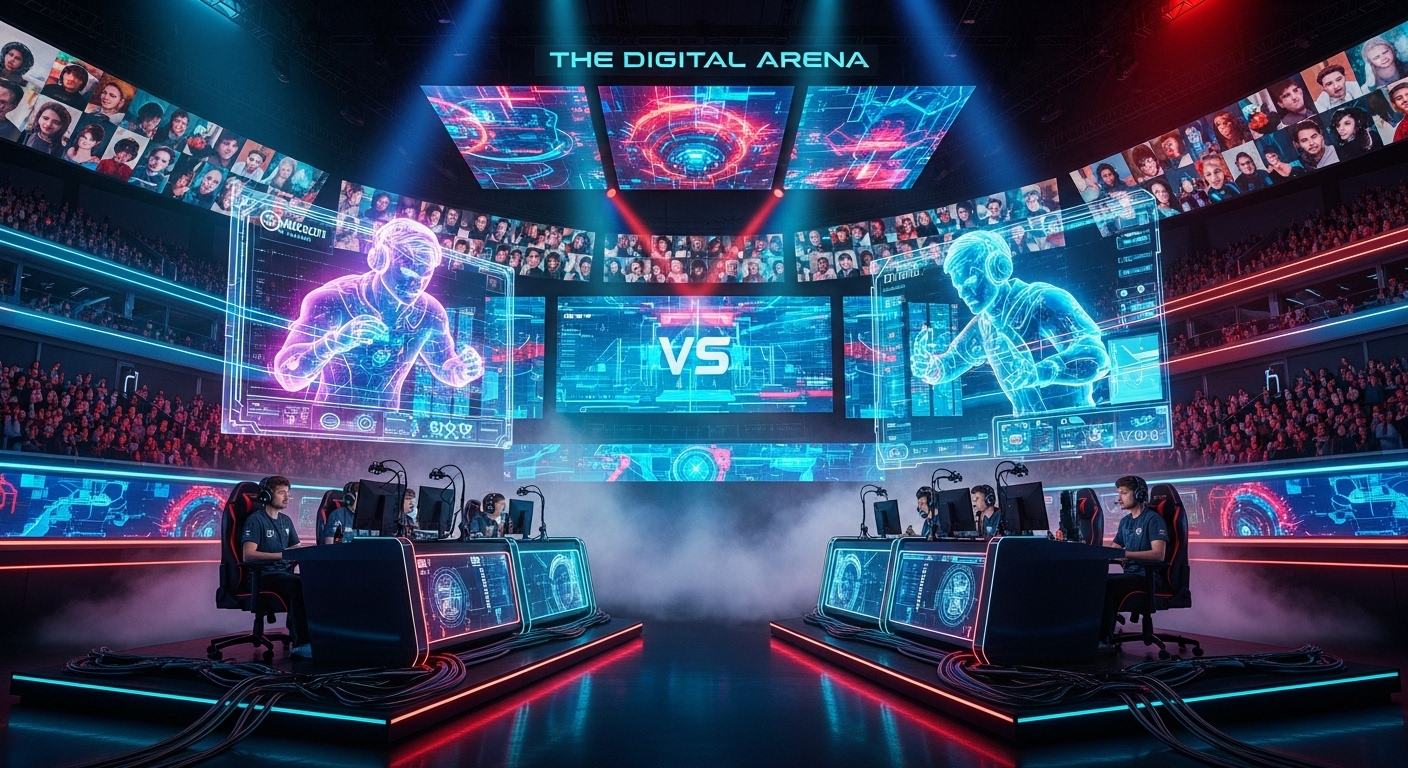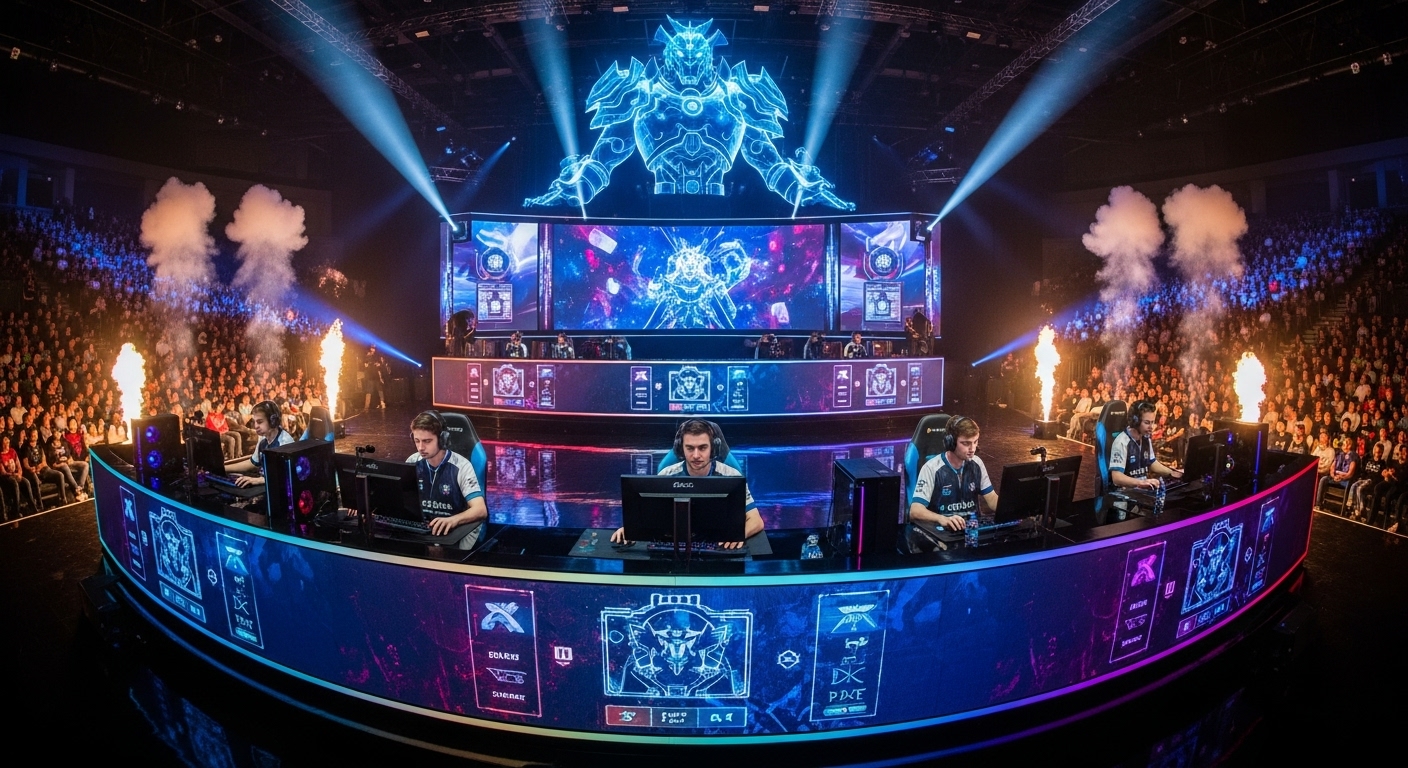Introduction
Twenty years ago, the idea of watching other people play video games might have seemed strange. Back then, gaming was mostly a hobby done behind closed doors—something you did alone or with a few friends. Fast-forward to today, and Esports has exploded into a global entertainment phenomenon. Millions tune in to watch professional gamers compete, filling massive arenas and streaming platforms across the world. What started as a niche pastime has evolved into a billion-dollar industry, attracting sponsors, celebrities, and even universities offering scholarships for gaming talent.
Esports has redefined what it means to be an athlete, a competitor, and a fan. It’s reshaped the entertainment landscape, proving that skill, strategy, and teamwork are just as alive in the digital world as on the field.
Let’s dive into how Esports grew from underground tournaments to a mainstream cultural force—and what makes it so captivating.
The Early Days: Where It All Began
The roots of Esports trace back to the late 1970s and 1980s. While the internet was still in its infancy, arcade competitions were already drawing crowds. One of the earliest known gaming competitions was held in 1972 at Stanford University, where students competed in the game Spacewar. The prize? A year’s subscription to Rolling Stone magazine.
By the 1980s, arcade machines like Pac-Man and Donkey Kong were everywhere. Players began to chase high scores, and competitions started appearing in magazines and on television. Shows like Starcade featured players battling for gaming glory on national TV, marking one of the first attempts to bring gaming competition to a mainstream audience.
In the 1990s, with the rise of home consoles and PC gaming, the scene began to evolve. Games like Street Fighter II and Quake inspired organized tournaments. The 1997 Red Annihilation tournament for Quake is often cited as the first real Esports event, with over 2,000 participants and the winner taking home developer John Carmack’s Ferrari as a prize.
That moment showed the world that gaming could be more than fun—it could be serious competition.
The Internet Revolution
As the 2000s arrived, so did the high-speed internet era. Suddenly, gamers didn’t need to be in the same room—or even the same country—to play against each other. Online multiplayer games like Counter-Strike, StarCraft, and Warcraft III gave rise to new communities and rivalries.
In South Korea, StarCraft became a national obsession. The country’s broadband infrastructure and government support helped launch professional gaming teams, televised tournaments, and dedicated gaming channels. Players became celebrities, with sponsorships and fan clubs. This was the first country where Esports achieved mainstream status, and it became the blueprint for the rest of the world.
Meanwhile, in the West, games like Halo, Call of Duty, and Counter-Strike began forming professional circuits. Organizations such as Major League Gaming (MLG) brought structure to the scene, introducing standardized rules, official rankings, and live events.
The internet didn’t just connect players—it connected fans. Streaming platforms like Twitch and YouTube Gaming transformed how people watched games. Suddenly, anyone could tune in live to see the world’s best players compete, without needing cable TV or expensive tickets.
Esports Becomes a Global Industry
By the 2010s, Esports wasn’t just for hobbyists anymore—it was big business. Game publishers, sponsors, and media companies all wanted in. Titles like League of Legends, Dota 2, and Counter-Strike: Global Offensive became household names among gamers, drawing millions of viewers to their championship events.
League of Legends, in particular, played a massive role in professionalizing Esports. Its developer, Riot Games, established a structured league system with salaries, team houses, and official seasons—mirroring traditional sports. This stability attracted major investors, including sports franchises and celebrities who saw Esports as the next frontier in entertainment.
Prize pools began to reach staggering amounts. The Dota 2 International tournaments regularly broke records, with millions of dollars crowdfunded by players and fans. In 2019, the Fortnite World Cup gave out over $30 million in total prizes, making some teenage players overnight millionaires.
At this point, it was clear: Esports was no longer a subculture. It was a legitimate industry.
The Players: Modern-Day Digital Athletes
One of the biggest misconceptions about Esports is that it’s “just playing games.” In reality, professional players train for hours each day, analyzing strategies, reviewing gameplay footage, and maintaining peak mental performance.
Esports demands precision, reflexes, and teamwork. A single mistake can cost a championship. Just like traditional athletes, these players work with coaches, analysts, nutritionists, and even sports psychologists to stay at the top of their game.
A professional gamer’s career is intense but often short. Reaction times peak in early adulthood, and burnout is common. Many players retire in their mid-twenties and move into coaching, streaming, or commentary. Despite that, the passion they bring to the competition is undeniable.
Beyond skill, these players have charisma. Fans connect with them not just for their gameplay, but for their personalities, humor, and authenticity. Streamers and pro players build massive online communities, where fans feel like part of the journey.
Esports Arenas: The New Stadiums
Gone are the days of gaming tournaments held in small LAN centers. Today, Esports events sell out massive venues—the same arenas that host concerts and basketball games.
Events like the League of Legends World Championship, Overwatch League Finals, and The International draw live crowds of tens of thousands. The production value rivals that of the Super Bowl, complete with dramatic lighting, stage effects, and live commentary.
The atmosphere is electric. Fans chant for their favorite teams, wave banners, and wear jerseys. The energy of a crowd watching a clutch play or last-minute comeback feels no different from that of a traditional sporting event.
What’s unique about Esports events is their global reach. A match played in Los Angeles might have viewers tuning in from Seoul, Berlin, and São Paulo—often watching in multiple languages. That worldwide audience makes Esports one of the most inclusive forms of entertainment today.
The Role of Streaming and Content Creation
If there’s one thing that propelled Esports beyond gaming circles, it’s streaming. Platforms like Twitch, YouTube, and even TikTok have turned gaming into a spectator sport.
Streaming isn’t just about watching professionals compete—it’s about community. Viewers chat, share memes, and form friendships around their favorite players and teams. Streamers interact directly with fans, blurring the line between celebrity and audience.
Esports organizations have also learned to tell stories. Behind-the-scenes documentaries, player interviews, and highlight reels give fans an inside look into the drama and dedication behind the screen. It’s no longer just about the match—it’s about the journey.
Content creation has also become a second career for many pros. Even after retiring, former players often continue to stream, coach, or create content, keeping their fanbase alive and influencing the next generation.
The Business Side: Money, Sponsorships, and Media
With millions of viewers come millions of dollars. Esports has attracted major sponsorships from tech giants, beverage companies, and even luxury brands. Names like Coca-Cola, Intel, and Mercedes-Benz have appeared on team jerseys and event banners.
Media rights are another growing area. Networks and streaming services compete for broadcasting deals, much like traditional sports. Esports organizations are now valued in the hundreds of millions, rivaling established sports franchises.
Merchandise sales, team branding, and digital goods add even more to the mix. Fans proudly wear team apparel or buy in-game skins that support their favorite organizations. The connection between fans and players isn’t passive—it’s participatory.
Esports also opened new career paths beyond playing. Event management, production, broadcasting, marketing, and analytics all have roles to fill. As the industry expands, so does the ecosystem surrounding it.
The Role of Technology
Esports thrives because of technology. High-speed internet, powerful graphics cards, and real-time streaming have made it all possible. Without them, the global stage would simply not exist.
But technology’s influence goes deeper. Advances in virtual reality, artificial intelligence, and cloud gaming hint at the future of competition. Developers constantly optimize games to ensure fairness, balance, and performance, while new tools enhance how audiences experience the action—like 3D replays, live stats, and player cams.
Esports also drives innovation. Hardware companies push boundaries to meet the demands of competitive gamers—faster monitors, precise peripherals, and low-latency networking. The result is a tech arms race that benefits both professionals and casual players.
The Cultural Impact
Esports has become more than competition—it’s a cultural movement. It bridges generations and backgrounds, bringing together people who might otherwise have nothing in common.
It’s also reshaping education and career paths. Universities now offer Esports scholarships and degrees in game management and production. High schools have varsity Esports teams. Governments are recognizing professional gamers as athletes, and Esports events are even being considered for inclusion in global competitions like the Olympics.
Representation has also improved. While Esports has long been male-dominated, more women and diverse communities are entering the scene. Inclusive tournaments and grassroots movements are pushing for equal opportunities and visibility for all players.
At its core, Esports reflects modern culture: digital, fast-moving, and community-driven.
Challenges and Criticisms
Despite its success, Esports faces challenges. Player burnout, long working hours, and mental health struggles are serious issues. Organizations are beginning to address these, but there’s still progress to be made.
Another concern is sustainability. Prize money and sponsorships drive much of the industry’s income, but profitability for smaller teams and organizers remains a challenge. As the industry matures, finding long-term financial stability will be key.
Toxic behavior in online communities also remains a problem. Developers and leagues are working to create safer, more inclusive environments, both online and offline.
Finally, the question of regulation lingers. Unlike traditional sports, there’s no central governing body overseeing Esports. Each game publisher controls its own ecosystem, leading to inconsistent standards. Balancing creative freedom with structure will be an ongoing task.
Esports and Traditional Sports: Friends or Rivals?
At first, many traditional sports fans dismissed Esports as a fad. But over time, even major sports organizations have embraced it. The NBA created the NBA 2K League. Formula 1 launched virtual races. Soccer clubs from Real Madrid to PSG have Esports divisions.
Rather than competing, traditional sports and Esports are finding ways to complement each other. Both involve strategy, teamwork, and passion. The digital nature of Esports also appeals to younger audiences, providing traditional sports with a bridge to future fans.
Meanwhile, technology borrowed from Esports—like real-time analytics and live streaming—has begun to influence how traditional sports engage with their audiences.
The Future of Esports
The future of Esports looks brighter than ever. As technology evolves, so will the way we play and watch.
Virtual reality and augmented reality could redefine the spectator experience. Imagine watching a match from inside the game world, standing beside your favorite player as they compete.
AI tools will enhance coaching, analyzing player performance in real time. Blockchain technology could introduce new ways to reward fans and track ownership of digital assets.
On a larger scale, Esports may become a fixture in global sporting events. It’s already part of the Asian Games, and discussions about Olympic inclusion continue.
But beyond the tech and spectacle, the essence of Esports will remain the same: people coming together to compete, connect, and celebrate the games they love.
Conclusion
Esports is no longer a hobby—it’s a global culture. From the early arcade tournaments of the 1980s to the sold-out arenas and million-dollar prizes of today, its rise is nothing short of remarkable.
It blends passion, technology, and creativity in a way few industries can. Whether you’re a player, a fan, or just curious, Esports offers a window into the digital heartbeat of modern entertainment.
It represents more than games—it’s a story of connection, ambition, and evolution. And if the last two decades are any indication, the next chapter of Esports will be even more extraordinary.



